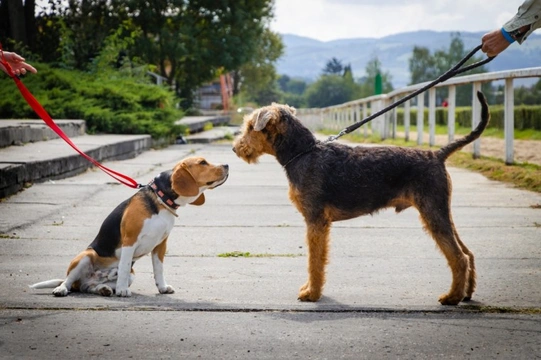
Five frequently asked questions about group dog walks
Group dog walks are becoming ever-more popular all over the UK, ranging from loosely organised small local gatherings of just a handful of dogs to much larger and heavily planned out events.
Particularly in bigger cities, the sheer range of group walk options available can surprise owners, and breed-specific meet ups are not uncommon either in areas where there are large populations of dogs of specific breeds.
These breed-specific meets offer a range of advantages too, as the dogs in the group all share common traits such as energy levels (to an extent) and their general preferences.
If you’ve only just heard of the concept of group dog walks, you might be wondering how to find out more, and the best point of contact for this is a group’s organiser. This article will answer five frequently asked questions about group dog walks to get you started in the meantime. Read on to learn more.
What is a group dog walk?
A group dog walk is a formally organised (albeit usually in a fairly loose sense of the word) walk that is open to dog owners in general to attend, with the obvious caveats on a limit to the number of dogs that can attend each walk and restrictions on dog health and behaviour.
They are essentially friendly socials for dogs and owners undertaken along a planned route or in a planned area, and they provide valuable opportunities for socialisation between dogs, as well as the chance for owners to meet each other and chat too.
It is not always the case, but not uncommon, for walks to end in a dog-friendly pub or café for a drink afterwards.
Group dog walks don’t usually charge for attendance although the organisers may ask or mandate a contribution to any costs, such as third-party liability insurance, which may be required to make the walks happen.
How do I find out about group walks in my area?
The internet is usually the first place to look, such as on local groups for pet owners, pet lost and found sites and groups on social media platforms, and local village and interest pages.
You may also see signs up in shop windows, particularly of dog-related businesses like vets, pet shops and dog groomers.
Your local vet or other pet-related businesses may well know of local group organisers they can put you in touch with too.
What should I look for before deciding to join a group walk?
If you’ve decided a group dog walk is a good fit for you and your dog and you’ve identified one or more local groups or potential options, you should do a little light background research before you go along or ask to join.
First of all, all but the most loosely organised small-scale group walks that have a leader or organiser will be required by law to have public liability insurance coverage, so this is what you should look for in the first instance.
Word-of-mouth recommendations that speak to good organisation, the appropriate rules in place for health and safety and the expected behaviour of the dogs (and owners!) and a rule, which is enforced, on dogs being vaccinated and flea and worm treated are important too.
There should also be rules about owners carrying and where directed, using leads on their dogs. Some walks will be on-lead only for the entire duration.
Are group dog walks good for puppy socialisation?
Group dog walks can provide a good opportunity to socialise older puppies; being those over the age of around six months old and which are already starting to mix with older dogs on a more equal footing.
They’re not usually well suited to puppies younger than this, who won’t be able to keep up and that won’t meet the other dogs on equal terms. This is not a hard and fast rule though, so speak to the group organiser about the dynamics of the group, and personalities of the other dogs.
Keep a lookout too for special groups organised for puppies only, as mixers for puppies and older dogs, and of course, puppy socialisation classes are all options too.
Don’t forget that whatever the age of your puppy, if you get the green light to go along, they will need to be fully vaccinated and cleared to go out by that point.
How can I tell if my dog would be well suited to group walks?
Dogs that are social and that make friends quickly or that generally don’t cause problems when greeting others are well suited to group walks. However, even friendly dogs that aren’t well socialised and so that don’t display the proper canine manners and communications with others may not be such a good fit, until they have more experience of social interactions.
Dogs that already walk with others or that walk with a dog walker should be fine, but dogs that re unpredictable or reactive with others, or that will not obey basic commands, won’t be a good fit.



